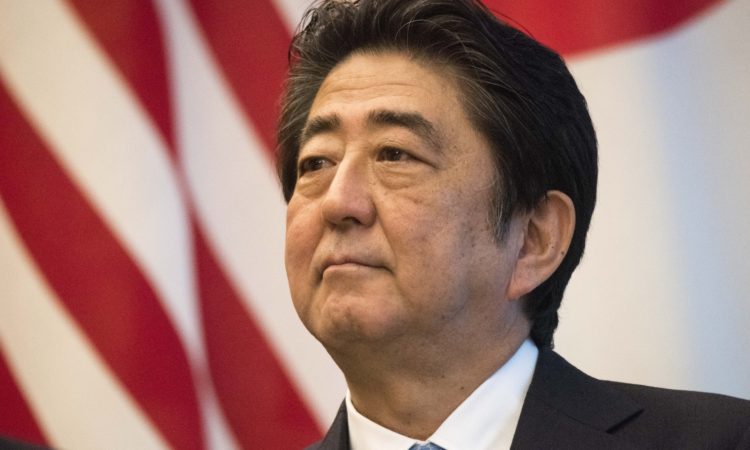The word ‘karoshi‘, which translates to ‘death by overwork’, has long defined the traditional Japanese working culture for decades. Despite Japan being a popular tourist destination due to its rich culture and history, its work practices have notoriously been known worldwide for their toxicity and lack of work-life balance.
In the traditional Japanese labour model, overtime work is considered normal, and wage distribution is seniority-based (calculated based on how long you’ve worked at a certain company). In other words, loyalty to the company provides better prospects for career progression than the quality of work. However, with the COVID-19 pandemic influencing the global working environment, can traditional Japanese labour practices modernise? We interviewed several employees in Japan to provide their perspectives on Japanese work-life balance.
What’s Going On With Japan’s Workforce?
 Image credit: Canva
Image credit: Canva
Contrary to what you might think, Japan’s quantity-focused work culture has not resulted in a productive economic output. Japan’s unhealthy work culture has been deemed ineffective without a growing youth population and has not been generating a productive output that benefits the nation’s fiscal sustainability and social well-being in recent years. In 2022, to address the COVID-19 pandemic and energy crisis, the Japanese government’s public spending resulted in Japan’s gross public debt amounting to almost 245% of its GDP, the largest GDP-to-debt ratio of any developed country. A big reason why this level of debt has not decreased in recent years is due to the ongoing spending on pensions for the growing number of elderly.
This, in turn, is caused by Japan’s ageing population, an early mandatory retirement amidst increasing life expectancy, and a declining birth rate. Furthermore, having almost 3,000 individuals committing suicide due to work-related issues in 2022 alone does not help to consolidate the unproductivity caused by labour shortages. Hence, the Japanese government has been working towards policy reformations that ensure the effective contributions of women, the elderly, and foreign workers in a healthy manner. Strict regulations have been imposed on working hours, and the budget for child-rearing policies has been doubled to secure the future of the Japanese workforce.
How Did The Japanese Workforce Get To This Point?
 Image credit: Canva
Image credit: Canva
Aside from overworking being normalised as a display of dedication to a certain company and a wage distribution that generates a lifetime commitment of workers to their firm, the overall structure of an average corporate employee’s work has generally been rigid. Our interviewees shared that despite teamwork tasks improving in recent years, work distribution usually involves a single employee covering extensive aspects in a specific area of a particular project. For example, in the field of sales and customer service, most Japanese companies would task one salesperson as the point of contact for a client throughout the entire duration of a project.
In some cases, this might be due to a lack of human resources in a particular company. Still, for the most part, this method is used to ensure customer comfort through a more personalised form of communication. Contrastingly, overseas companies might task a salesperson to focus on getting orders before having a different team take over as the main spokesperson for the acquired customer. This is one reason why acquiring balanced working hours and productivity might be difficult, as most workloads are not dispersed towards a group of people. However, the COVID-19 pandemic, despite negatively affecting Japanese businesses, has also significantly transformed Japan’s work culture.
Did The COVID-19 Pandemic Improved Japanese Work-Life Balance?
 Image credit: Canva
Image credit: Canva
After the COVID-19 pandemic reached Japan, the remote-based working system was subsequently introduced and has provided some measure of work-life balance to Japanese workers. Once the mandatory quarantine was lifted, around 50% of companies with over 1,000 employees in Japan opted to maintain the pandemic-era work styles, with the rest opting for face-to-face work either out of principle or if they are in the manufacturing and sales industry.
In 2023, a survey covering 1,085 workers aged 20 to late 50s conducted by the Tokyo-based recruitment firm XTalent Inc. recorded that 48.7% of workers stated that they either did not want to return to the office or preferred a hybrid working arrangement. With the Japanese government promising various policy reforms to effectively improve Japan’s labour standards and a new working environment that is slowly being normalised, it begs the question of whether or not work-life balance is more attainable in post-quarantined Japan.
Prospects Of Work-Life Balance In Post-Quarantined Japan
The current prospects of work-life balance have changed after the mandatory quarantine requirement was lifted. Our interview sources have all voiced that a positive change is happening to Japan’s work culture. Still, opinions on attaining work-life balance post-quarantine vary depending on the type of company you’re working for and what sort of job your role entails you to do.
Shorter Working Hours?

Image credit: Canva
Working hours are becoming more limited in the service industry as most convenience stores and restaurants in Tokyo no longer offer 24-hour services. Requesting paid leave has been easier in recent years, with fewer criticisms from other employees. Working hours can be negotiable with remote options available or, in some cases, arriving at the office later in the day, depending on your workload.
Overtime work is slowly becoming an exception rather than the rule, as there is a consensus that all industries should have shorter working hours. In other words, in some companies, overtime work is an individual preference, only used if an employee thinks they prefer to stay overtime to finish their target instead of a required display of loyalty to the company.
Improved Productivity?
 Image credit: Canva
Image credit: Canva
There have also been some improvements in the wage evaluation system to be more performance instead of seniority-based, albeit slightly, as the average salaries of younger employees have not drastically increased after quarantine.
It all boils down to how relaxed the company’s management system is. Newer and small start-ups or international companies have been deemed to have a better work environment overall. One reason is that most employers in newer start-up companies are part of the younger demographic and tend to have a more internationalised mindset. This influences a working system that encourages employees to think for themselves and choose methods that are best to produce a particular output. The change has increased motivation for employees to give their best performance as they genuinely feel their contributions positively influence the company’s growth. Combined with post-pandemic technological advancements, the introduction of the hybrid system to Japanese companies, and, in some cases, providing workers with more autonomy over their work, there is potential for progress in Japan’s labour industry.
Advice From Japanese Workers In Attaining Work-Life Balance In Japan

Image credit: Canva
The best advice that our interviewees would give to anyone interested in working in Japan is to, first and foremost, learn to protect yourself. This is something that younger workers usually struggle to navigate as they might justify an abundant workload as the responsibility for junior workers and cannot identify objectively good work results due to a lack of experience in the workforce. Unfortunately, you cannot always control the work environment you’re thrown into, so finding the balance needed to deliver a good performance in a way that does not risk your overall health is crucial.
As daunting as it may sound, there also will be times when you must be a little selfish and stand up for yourself amid an unhealthy work environment. Identify the times when you genuinely have to handle additional work for the benefit of your team and when the tight deadlines for a certain workload seem unreasonable. If you feel as though you have done your best to complete your tasks, clock out and go home once your shift is over.
Like all countries, there are pros and cons to their work culture. Despite making progress after the pandemic, Japan still has a long way to go in terms of shifting towards a healthier working culture, as most senior Japanese employers are still traditionalists. So keep these points in mind when considering a Japanese career path.
Related Articles
- Behind Japan’s Declining Birth Rate: More Women in Education and the Workforce?
- Work-life Balance and Overtime in Japan
- 4 Things You Need to Know about Japanese Work Culture
Behind Japan’s Declining Birth Rate: More Women in Education and the Workforce?
Featured image: Canva






